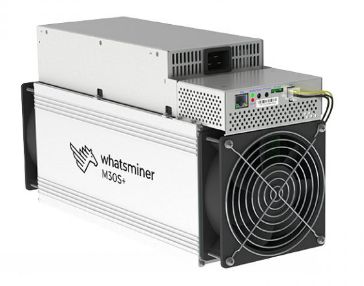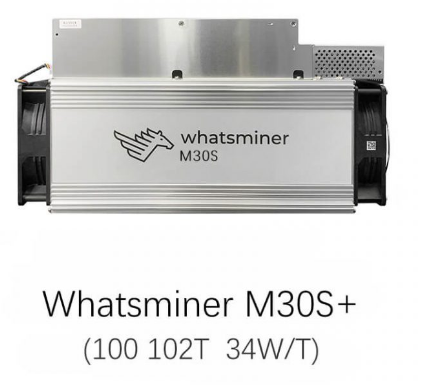How to troubleshoot network connectivity with WhatsMiner M30S+?-WhatsMiner M30S+
Title: How to Troubleshoot Network Connectivity with WhatsMiner M30S+
Network Connectivity Challenges in Cryptocurrency Mining
Cryptocurrency mining represents a complex technological ecosystem where network connectivity plays a critical role in maintaining operational efficiency. As miners, we understand that seamless network performance directly impacts mining productivity, revenue generation, and overall system reliability. The WhatsMiner M30S+ emerges as a sophisticated solution addressing these intricate connectivity challenges.
Understanding Network Connectivity Fundamentals
Before diving into troubleshooting strategies, it’s essential to comprehend the fundamental network requirements for cryptocurrency mining hardware. Successful mining operations demand stable, high-speed internet connections, robust Ethernet interfaces, and sophisticated network management capabilities.
Common Network Connectivity Issues in Mining Operations
1. Intermittent Connection Disruptions
Mining hardware frequently encounters connection instability caused by:
– Inadequate network infrastructure
– Signal interference
– Router configuration limitations
– ISP-related performance bottlenecks
2. Bandwidth and Latency Constraints
Cryptocurrency mining requires consistent, low-latency network connections to:
– Synchronize blockchain transactions
– Maintain mining pool communications
– Ensure real-time hashrate reporting
3. Hardware Interface Compatibility
ASIC miners like the WhatsMiner M30S+ necessitate specialized network configuration to optimize performance and minimize potential connectivity disruptions.
Comprehensive Troubleshooting Methodology for WhatsMiner M30S+
Step 1: Initial Network Assessment
– Verify physical Ethernet connection integrity
– Confirm cable quality and connection stability
– Inspect network interface ports for potential damage
Step 2: Network Configuration Validation
– Check IP address assignment methodology
– Verify DHCP or static IP configuration
– Ensure proper subnet mask and gateway settings
Step 3: Router and Firewall Configuration
– Review router firmware version
– Disable potential interference settings
– Configure port forwarding for mining operations
– Whitelist WhatsMiner M30S+ MAC address
Step 4: Advanced Diagnostic Techniques
– Utilize ping tests to measure network latency
– Conduct traceroute analyses
– Monitor network packet loss percentages
– Implement continuous connectivity monitoring
Technical Configuration Recommendations
1. Recommended Network Parameters
– Minimum bandwidth: 10 Mbps dedicated connection
– Preferred latency: Under 50ms
– Recommended network type: Hardwired Ethernet
2. Network Security Considerations
– Implement VPN tunneling for enhanced security
– Utilize robust firewall configurations
– Enable network encryption protocols
3. Diagnostic Tools and Software
– NetStat for connection tracking
– Wireshark for detailed network analysis
– Professional network monitoring platforms
WhatsMiner M30S+ Connectivity Advantages
The WhatsMiner M30S+ distinguishes itself through superior network integration capabilities:
1. Robust Ethernet Interface
– Standard RJ45 connectivity
– Supports multiple network configuration protocols
– Seamless integration with existing infrastructure
2. Environmental Adaptability
– Operates across 5-95% humidity ranges
– Temperature tolerance between -5°C and 40°C
– Designed for diverse operational environments
3. Advanced Connectivity Features
– Low 75dB noise generation
– Compact 425mm x 155mm x 225mm form factor
– Optimized for professional mining facilities
Practical Troubleshooting Workflow
1. Initial Connection Verification
– Confirm physical Ethernet connection
– Check cable integrity
– Validate network interface functionality
2. Configuration Optimization
– Update firmware to latest version
– Reset network settings
– Reconfigure IP assignment parameters
3. Performance Monitoring
– Track hashrate consistency
– Monitor network latency
– Analyze connection stability metrics
4. Proactive Maintenance
– Regular firmware updates
– Periodic network infrastructure assessment
– Implement redundant connectivity solutions
Professional Deployment Strategies
1. Redundant Network Configurations
– Implement multiple internet connection sources
– Utilize cellular backup mechanisms
– Create failover network infrastructure
2. Professional Monitoring Solutions
– Deploy specialized mining monitoring platforms
– Integrate real-time alert systems
– Establish automated diagnostic protocols
Economic Implications of Network Performance
Effective network management directly influences mining profitability:
– Minimized downtime
– Consistent hashrate generation
– Optimized operational efficiency
– Enhanced revenue potential
Conclusion: Strategic Network Management
The WhatsMiner M30S+ represents a comprehensive solution for miners seeking reliable, high-performance cryptocurrency mining hardware. By implementing systematic network troubleshooting methodologies and leveraging the device’s advanced connectivity features, miners can maximize operational efficiency and maintain competitive mining performance.
Critical Success Factors:
– Systematic troubleshooting approach
– Advanced hardware capabilities
– Proactive network management
– Continuous performance optimization
Investment in robust network infrastructure and sophisticated mining hardware like the WhatsMiner M30S+ remains key to sustainable cryptocurrency mining success.
|
Please feel free to contact me to assist you in resolving your issues: E-mail: Minerfixessales@gmail.com WhatsApp/WeChat:+86 15928044684
The services we offer include:
a.New and Used Miners b.Miner Accessories c.Miner Repair Courses d.Global Repair Stations e.Overclocking and Underclocking Services |

|